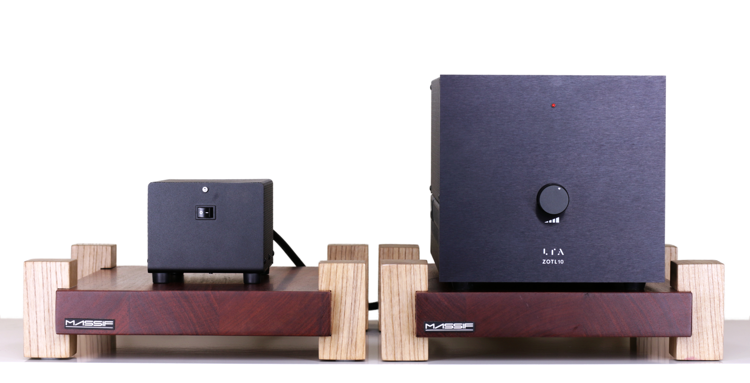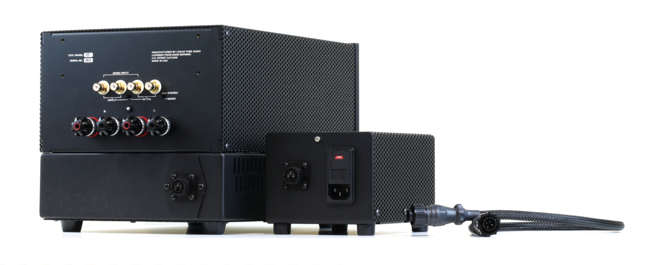
In my first review of a Linear Tube Audio (LTA) amplifier I said, “You may not know Linear Tube Audio, but I bet you know who David Berning is.” When I think of legendary and creative tube amp designers, David Berning is one of the names that jumps into my mind. Mark Schneider, the founder of LTA is continuing to market David Berning’s amplifier designs. Mark has an engineering background that included management, manufacturing, and product design. Mark was forced into an early medical retirement, and after a multi-year recovery, he decided to commit himself to his previous passion, high-end audio. It was the uniqueness and complexity of David Berning’s designs along with their spectacular sound that attracted Mark.
So, Linear Tube Audio was founded in 2015, and Mark entered into an agreement with David Berning to manufacture and sell the ZOTL amplifiers. Each amplifier requires hours of building by hand, which is currently done by Mark and his team in LTA’s Washington, DC workshop. David Berning personally reviewed the initial units to ensure that the build quality met his extremely high standards.
Description
The ZOTL10, the first in a new series of hand-built amplifiers designed by Mark Schneider and David Berning for Linear Tube Audio, was introduced in the fall of 2015. The ZOTL amplifiers produce much less hum than typical tube amplifiers, and they work well with the new types of high-efficiency or full-range speakers that have been coming on the market. There’s a simple reason for this; Berning’s ZOTL circuit produces much less hum than typical tube amplifiers, and this hum can be much more pronounced when connected with high-efficiency speakers. The ZOTL10 uses Russian premium Gold Lion EL-84s, and NOS 12AT7, and 12AU7 tubes.
The amp I received for this review is the next generation of the ZOTL10, the Mk.II. If you are a regular reader, you may remember that I gave the Linear Tube Audio / Fern & Roby Room a Beatnik Bongos award for “Best Room under $25,000” at RMAF. That room used this amplifier. I also recently reviewed the MZ2-S amp with my Teresonic Ingenium XR speakers. In fact, I gave the MZ2-S a “Best of 2017” award for the “Best Specialized Amplifier Product of 2017.”
So what’s different with the ZOTL10, Mk.II? It has an entirely new linear power supply designed with the same ultra-low noise Belleson regulators as LTA’s MZ2’s LPS+. They’ve put the power supply in a separate enclosure in order to ensure the lowest possible noise floor. The backplate now features WBT binding posts, copper RCA jacks, separate inputs allowing either a direct-to-board connection or the use of a volume control that is either an Alps pot or an optional microcontroller-based stepped attenuator allowing attenuation with minimal signal degradation.
The ZOTL10 Mk.II uses Berning’s ZOTL technology, which allows for a highly reliable protection circuit, low output impedance, very consistent performance regardless of speaker impedance, and low-heat operation with long tube life. All ZOTL10 models are upgradeable to the new power supply. To find out more, visit the amps upgrade section on the product page of their website.
Review System
Setup was very easy. I simply took the LTA MZ2S out of my reference system and plugged in the LTA ZOTL10 Mk.II and hooked it up to my Teresonic Ingenium XRs. They are 104 dB efficient and use a single Lowther DX-4 Silver driver with a six-foot ETQWT transmission line enclosure with Helmholtz resonators. For a line stage, I used both the LTA MZ2S and the Emia Remote Silver Autoformer. In the end, I preferred the MZ2S as the line stage. The source consisted of an AMG V12 turntable, an AMG V12 Turbo tonearm, and a DS Audio Master1 Optical Phono Cartridge. The speaker wire and interconnects were Duelund Tinned Copper Wire, the phono cable was an Audience Au24SX and the power cables were Audience Au24SEs plugged into my HB Cable Design’s PowerSlave Marble Power Distributor.
Listening

I was really excited about greatly the arrival of the ZOTL10 Mk.11 because I had fallen in love with the little one watt LTA MZ2S. Still, in the back of my mind, I couldn’t help but think that even with 104dB efficient, single-driver speakers I needed more than just 1 watt. So, I was hoping I could get the same magic from a David Berning ZOTL designed amp that had 10 watts. At RMAF, Mark Schneider reminded me that the 10 Mk.II was a Class AB amp and not a pure Class A like the MZ2S.
Mark was right, the Mk.II is an exceptional amp in its own right, but it is a different sounding amp than the little MZ2S. I’ve never been a big fan of non-Class A amps whether tube or transistor. I also have to admit I loved the sound of Julian Futterman and Judd Barber’s OTL amplifiers, but I never felt I could afford them or afford to retune them. Often, I have really loved amps that use the EL84 as an output tube. So, I’m not going to spend a lot of time comparing the Mk.II with the MZ2S because it really doesn’t matter since probably way less than one percent of audiophiles could get by with a one-watt amp.
One of the first things I noticed about the Mk.ll was that it has great transients, especially in the leading edge. One of the things that make tube amps sound “tubby” is that many of them dull the leading edge and produce that liquid, lush sound associated with tube amps. Of course, not all tube amps are created equal. The only amps I have heard that can produce a realistic leading edge and still produce realistic harmonics and timbre are a couple of very expensive SETs or OTLs and the Pass Labs XA.8 Pure Class A transistor amps. The Mk.II falls into this group at a much more affordable price point and puts out the same 10 watts that my Wavac EC300B did at a price of nearly $30,000.
The ZOTL10 Mk.II also gave me a very realistic musical presentation. You would never mistake it for a transition amp. It plays music with wonderful harmonics and richness but with musically quick transience and very nice bass control. Mentioning the bass, it was able to carry the music with a really good rhythmic drive. The bass was also very well defined but not overly tight, and there wasn’t the least bit of “one-note bass.” There was also a very natural air around and within most bass instruments.
The top end was smooth and very extended. String and woodwind overtones were played beautifully. I was particularly impressed with the air around reed instruments and with the bite of horn instruments. Another important job of the top end of an amp is to have enough detail to help place the instruments and voices as they should be on the soundstage. In this area, I was very happy. The soundstage and imaging were very well portrayed by the Mk.II.
The Mk.II had huge dynamics with the Teresonic speaker giving my system the ability to produce an involving emotional experience from any performance and recording that had the capacity to produce such an experience. Macro-dynamics alone is not enough to sound lifelike. You must also have great micro-dynamics and the MK.II was a champ with micro-dynamics so that recordings could be brought to life in my listening room. You do have to remember, however that the MK.II is only a 10-watt amp, and to experience this kind of dynamics will probably require at least a speaker with a sensitivity in the mid-90s.
It’s been 20 years since David Berning patented the ZOTL circuit, and the first time I heard one of his ZOTL amps was when I reviewed the LTA MZ2S. I have now heard two of these amps in my system, and I can tell you I have been missing something really fine. Overall, this amp gives you much of the best of both the tube world and transistor world while not showing many of their shortcomings. I would highly recommend this amp at any price, but it costs only $3,200.
